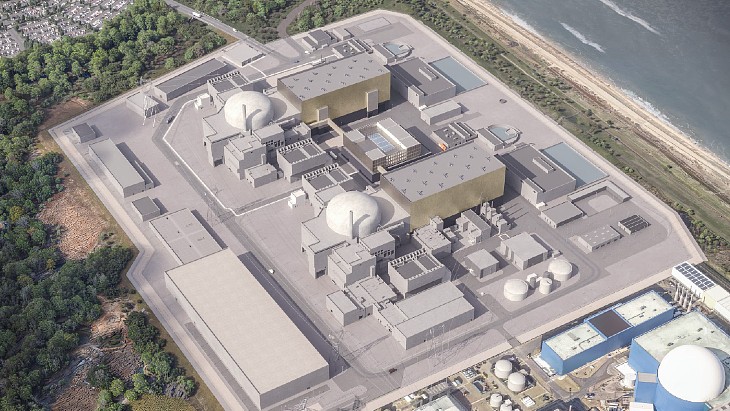Duke Energy yesterday (13 September) notified the NRC of the shut-down at the two-unit Brunswick plant, south of Wilmington, where NRC inspectors have this week reviewed storm preparations, including protection against the amount of rain and flooding that might be expected. Procedures require operators to shut down plants well before hurricane-force winds arrive on site. NRC inspectors are on site at the Brunswick plant and will remain there through the storm, the regulator said.
Officials at the Global Nuclear Fuels plant near Wilmington have also notified the NRC that they have shut down operations and secured equipment in advance of the storm. Other nuclear plants in the projected storm path have prepared for high winds and heavy rainfall. Inspectors also will remain at those sites as conditions require, the NRC said.
The US National Oceanic and Atmospheric Administration's National Hurricane Center at 6:00 am EDT on 14 September said the eyewall of the hurricane had already made landfall and at 7:00 am said the centre of the eye of the hurricane was about to make landfall near Wrightsville Beach in North Carolina.
Additional NRC inspectors are being sent to plants in the affected areas, where NRC resident inspectors are reviewing operator preparations. Staff at that plant, plus Dominion Generation's two-unit Surry in south eastern Virginia; Duke Energy's Shearon Harris in North Carolina; and Robinson in South Carolina; and some other plants are working through their severe weather procedures, the NRC said. Its inspectors are verifying that all preparations have been completed, and the plants' emergency diesel generators are available with ample fuel in case the storm affects off-site power.
The NRC is also verifying storm preparations at Global Nuclear Fuels-America facility near Wilmington and North Carolina State University's research reactor and other licensees in the region.
The US National Hurricane Center at 5:00 am EDT yesterday forecast the centre of the hurricane to approach the coasts of North and South Carolina, then move near or over the coast of southern North Carolina and eastern South Carolina. The US Federal Emergency Management Agency (FEMA), which coordinates the federal government's role in preparing for, preventing, mitigating the effects of, responding to, and recovering from all domestic disasters, whether natural or man-made, said the hurricane is expected to stall out after making landfall, and flood inland areas with rain in central and western parts of South Carolina, North Carolina, and Virginia.
Nuclear plant operators prepare in the days before a storm by ensuring that all loose debris and equipment is removed or secured, and conducting walk-down inspections of important systems and equipment. Emergency equipment, such as generators and pumps, are checked to ensure full operability. US regulations require nuclear power plants to shut down if a storm is forecast to strike the plant with sustained winds of greater than 73 miles per hour, because of the potential loss of off-site power.
The USA's nuclear power plants have weathered hurricanes before. In October 2016, Hurricane Matthew's landfall brought down power lines and flooded transformers, leaving more than two million customers without power across several states. The Robinson plant responded to a temporary loss of off-site power by shutting down safely. The Harris plant also experienced a loss of off-site power, but was already shut down for a scheduled refuelling outage. Emergency diesel generators at both plants operated as designed, and off-site power was restored within 24 hours.
Duke Energy meteorologists are estimating power outages in the Carolinas from Hurricane Florence could be between one and three million customers, the company said yesterday, with power restoration work potentially taking weeks.
FIRST PUBLISHED: 13 September 3:10pm GMT
UPDATED: 14 September 12:46pm GMT

.jpg)



_55530.jpg)
_42372.jpg)
_37521_70699.jpg)

_76087_55556.jpg)




